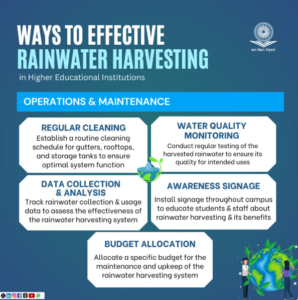“Water, water, everywhere, and all the boards did shrink;
Water, water, everywhere, nor any drop to drink.”
-Samuel Taylor Coleridge.
According to estimates, there are thousands of villages in India without potable drinking water. We have seen during last few days that the government is forced to transport water to drought hit areas through the rail network and many more areas are crying for similar help. Water is, of course, not needed just for drinking- irrigation, industrial use, washing, transportation, electricity generation- it envelops each and every sphere of our life. Severe shortage of this invaluable source of life can be attributed to natural causes (irregular rains etc), however, we ourselves have to be blamed the most.
We have to be responsible:
We waste water, we pollute water, and above all, we force nature to change its patterns through our actions. Not only this, we fail to take corrective steps despite having all the required knowledge and resources. So much water can be saved if sprinkler or drip irrigation is used instead of the traditional methods; industries can save huge amounts of water if they only use recycled water and use filters and water treatment plants. Similarly, domestic wastage of water has to be checked without any further delay, and we have to be more responsible, for our generation and the generations to come.

It is estimated that even if rainwater falling in just 2% of the country’s land area could be collected, around 26 gallons of water would be available per person. This makes rainwater harvesting such an important part of water conservation strategy. What exactly is rainwater harvesting?
Rainwater harvesting is collection and storage of rainwater to be used for human, animal and plant needs. It’s perhaps the most effective method for water management and water conservation. Before throwing light on various advantages of harvesting rainwater, let us take a look at the methods used for harvesting these droplets of life.
There are mainly two methods of harvesting rainwater:
- Surface runoff harvesting
- Roof top rainwater harvesting
Surface runoff harvesting:
Urbanization has given rise to several problems. Since most areas in city centers are paved or made of concrete, water doesn’t find any place to permeate into aquifers or subsoil water. It just flows as surface runoff and goes waste. We discussed rainwater planters, an effective method for surface runoff rainwater harvesting, in one of our previous posts.
Roof top rainwater harvesting:
Urban areas, especially the metros and other big cities, have large buildings that possess huge terrace areas. These building tops can be used as an asset to harvest rainwater. Roof top harvesting is a system of catching rainwater where it falls; roof becomes the catchment here. Water can be collected here in the tanks or diverted to artificial recharge systems. This method, though less expensive, is very effective in augmenting the ground water levels.
Components of roof top harvesting:
- Catchment area: The surface receiving the rainwater directly acts as the catchment area of the harvesting system. Terraces or courtyards of a building or paved or unpaved open areas can serve as the catchment areas.
- Transportation: A transportation system is needed to carry the rainwater to the storage tank or harvesting system. Downpipes or drains may be used for the purpose as per the requirement and convenience. If the building has a sloping roof, water can be caught using gutters and downpipes.
- Filter: Filters must be used to ensure that rainwater doesn’t contaminate the ground water. They treat water to remove turbidity, color and microorganisms. The storage tank or the harvesting system is fitted with a filter made of layers of gravel, sand and a wire mesh that prevents silt, dust, leaves and other organic matter from entering the storage device.

Advantages of rainwater harvesting:
- This is an inexpensive method for replenishing ground water table effectively.
- The aquifer can also serve as the distribution system.
- No extra space is needed for storage purpose; you don’t need to displace people as in case of large dams.
- As surface runoff is checked, chances of floods or water logging are reduced considerably.
- Enough water can be made available for all purposes even in normally drought hit areas and soil erosion can also be checked.
It’s necessary to remind every human being on earth that no alien is ever coming to solve our problems for us; we have to do it ourselves. Unfortunate part is we do nothing despite knowing the problems and having the capacity to take corrective measures and effectively solve these problems. Are we waiting for another pralay, the catastrophe? Stay connected for more informative and reawakening blog posts!
Sources:
- https://cmwssb.tn.gov.in › rwh-differentmethodsofrain…
- https://neoakruthi.com › blog › rainwater-harvesting-m…
- https://en.wikipedia.org › wiki › Rainwater_harvesting
- https://www.jkcement.com › … › Construction Planning
- https://www.instagram.com/ugcindia/p/C9PzTlbv-dk/
ABOUT THE AUTHOR

Sandeep Singh is an architect from IIT Roorkee.
Ten years after graduating, he lost his vision to genetic Diabetes.
He reinvented his career and turned writer.
He has authored two fiction books and writes blogs on
Architecture, Outsourcing, Safety and a variety of other
subjects for different organizations. He also chairs and runs two NGOs
